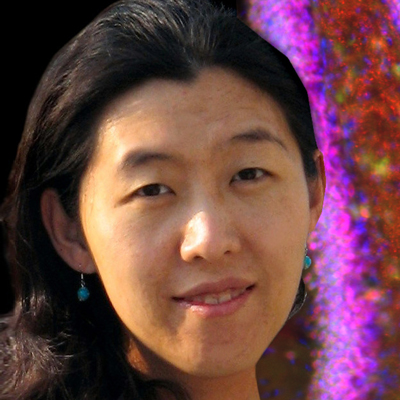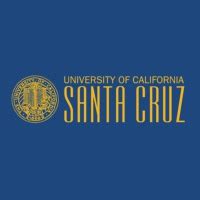From the core of neural circuitry to the brain protection system of glial cells
Many scientists have examined neurons and their disconnections as sole potential culprits responsible for dysfunctions in brain circuits. While continuation of such research is important, studies in other brain cells contributing to the development of neurological and psychiatric disorders remain largely unexplored. Glia are one such candidate, as they “glue” the nervous system together by providing nutrients, protections, and waste collection services to the brain. Dr. Yi Zuo, expert in neural circuitry and Associate Professor of Molecular Cell and Developmental Biology at the University of California, Santa Cruz, expands her knowledge of the neural basis for learning and memory, while pioneering a new field of research in the contribution of glia in etiology. With innovative multiple-photon microscopy for deeper brain imaging, Dr. Zuo hopes to further elucidate changes in neural circuitry and glial cells, and help improve strategies for stroke rehabilitation, learning and teaching, and other medical therapeutics and treatments.
With four postdocs and four graduate students, Dr. Zuo collaborates with engineers at UCSC to develop adaptive-optic multi-photon microscopes for deep brain imaging, and with physicists to build finer multi-array systems for in vivo recordings. Leveraging techniques of in vivo optical imaging, mouse genetics, behavioral analysis, and circuit mapping, Dr. Zuo’s research program is able to examine brain wiring, also known as synaptic remodeling, and its implications for learning, memory, and neuropsychiatric disorders. Studying neuron-glia interaction in the living brain is particularly difficult due to the thinness of glial processes, which falls below the resolution limit of light microscopy. By continually seeking solutions to make glial studies more accessible, Dr. Zuo will not only be able to refine current technology but also contribute a great deal in expanding novel lines of neuroscience research.
Current projects include:
-
Synaptic Remodeling in Learning and Memory: Neurons communicate with each other at sites called synapses, and behavioral experiences modify the structure and function of synapses, rewiring the brain circuitry. Abnormal synaptic connections are hallmarks of many neurological and psychiatric disorders. Dr. Zuo’s lab studies how information is encoded in the synaptic circuitry by imaging large-scale, synaptic-level dynamics in the living brain.
-
Synapses, Glia and Diseases: Dr. Zuo’s lab has shown, for the first time in vivo, the glial involvement in synaptic abnormalities and behavioral defects in Fragile X Syndrome (FXS), the most prevalent form of inherited mental retardation. This study provides a more complete understanding of FXS etiology, and further studies can help develop alternative treatment strategies and extend the research to glial contribution in autism.
-
Molecular Profiling of Synapses: Characterizing the molecular and ultrastructural profiles of specific synapses identified in vivo is extremely challenging, as signatures of synapses at different stages of formation, maturation and elimination remain largely elusive. To fill this considerable knowledge gap, Dr. Zuo’s lab collaborates with scientists at the Allen Institute for Brain Science, and aims to combine in vivo 2-photon imaging with Allen Institute’s Array Tomography for proteometric and ultrastructural examination of individual synapses. In doing so, Dr. Zuo aims to identify molecular markers that distinguish newly formed spines from old ones, which will enable her to explore synaptic dynamics in situations where in vivo imaging is unfeasible. This is particularly valuable for studies on the cellular dynamics in the human brain, and for translating findings in mouse models to treating human patients.
-
Stroke Rehabilitation: In collaboration with two research groups at University of Texas, Austin, Dr. Zuo and her lab are investigating the brain rewiring following stroke and how motor rehabilitation affects stroke recovery. This study helps determine the best time and strategy for stroke rehabilitation.
-
Imaging Deeper into the Brain: The brain is opaque to light. Diffraction and scattering of light restricts live brain imaging to the superficial layers of the cortex. In order to overcome this limitation, Dr. Zuo and other researchers at UCSC have established a UCSC Adaptive Optical Microscopy Center. Their goal is to develop a microscope that can image subcortical structures with synaptic resolution in vivo. With unprecedented penetration depth, this microscope will be applicable to a variety of biomedical questions, benefiting biologists and clinical researchers alike.

Bio
Dr. Yi Zuo grew up in a physician family in China and dreamed to be a medical doctor her whole childhood. This dream shattered in high school, when her grandmother got a cold and passed away due to her allergy to all antibiotics. Her grandmother had been a very healthy person and was never sick up to that point. It was horrifying for Dr. Zuo to see her illness progress so quickly and medicine was so powerless, if not harmful. This experience made her decide not to pursue medicine, but rather to go into biology to understand how human systems work. Although much of basic research does not lead to immediate cure of diseases, Dr. Zuo believes that “improving our understanding of biology itself is the only hope for it.”
Dr. Zuo’s neuroscience career started with graduate research in Dr. Toshio Narahashi’s laboratory at Northwestern University, where she was trained in electrophysiology and neuropharmacology. In her third year, she was accepted into the extremely competitive neurobiology summer course at the Marine Biological Laboratory (MBL)—a turning point in her scientific career. Over a period of only nine weeks, she was exposed to many different topics in neuroscience, learned numerous new techniques and established critical scientific friendships. The MBL experience deepened Dr. Zuo’s enthusiasm for science, inspired her to pursue an academic career, and greatly influenced her current scientific approach and philosophy. She became entranced by the power of live imaging, and a firm believer that structure holds the key to understanding function. She also became convinced that the only way to understand structural changes is to examine them in living animals. Dr. Zuo subsequently switched her focus from synaptic physiology to live imaging, pursuing this approach during two postdoctoral positions. She studied synapse dynamics during development and sensory manipulation in the mouse brain with Dr. Wenbiao Gan at New York University, then investigated roles of glial cells synapse remodeling with Dr. Wes Thompson at UT Austin. This period was exciting and productive for Dr. Zuo, not only in terms of publications, but because it enabled her to identify the types of scientific questions that she still pursues today. The transcranial imaging approach she developed in Dr. Gan’s lab allows her to follow brain structural changes in the intact brain, while the glial mouse lines she characterized in Dr. Thompson’s lab provided valuable resources to study glial cells in vivo.
Outside of research, Dr. Zuo loves travel and food, most importantly building new experiences of life; she enjoys going to new places, experiencing new cultures and making new friends. “In some ways,” she remarks, “science is pretty much like these. Every day there is a new puzzle waiting for us to play and solve, and this makes me excited to go to work.”
For more information, visit http://research.pbsci.ucsc.edu/mcdb/zuolab/index.html

In the News
Postnatal maturation of the brain requires pruning of excess synapses, a process that is dependent on sensory input and synaptic activity. Yu et al. found that Ephrin-A contributed to synapse stabilization in the cortex. ... (by Jason Berndt in Science Signaling)
Yi Zuo of the University of California, Santa Cruz, and her colleagues studied how neurons changed in the brains of three groups of mice that learned different kinds of behaviors over four day ... (by Ferris Jabr in Scientific American)
New research adds to our understanding of the learning process by showing exactly what's going on in the brain while performing tasks (by Alice G. Walton in The Atlantic)
The W. M. Keck Foundation awarded a $1 million grant from to fund the Center for Adaptive Optical Microscopy at the University of California, Santa Cruz. Engineers, biologists, and physicists at UCSC are developing new microscope technologies to enable biologists to see deep within living tissues and observe critical processes involved in basic biology and disease.
New connections begin to form between brain cells almost immediately as animals learn a new task, according to a study published in Nature in November, 2009. Led by researchers at the University of California, Santa Cruz, the study involved detailed observations of the rewiring processes that take place in the brain during motor learning.


